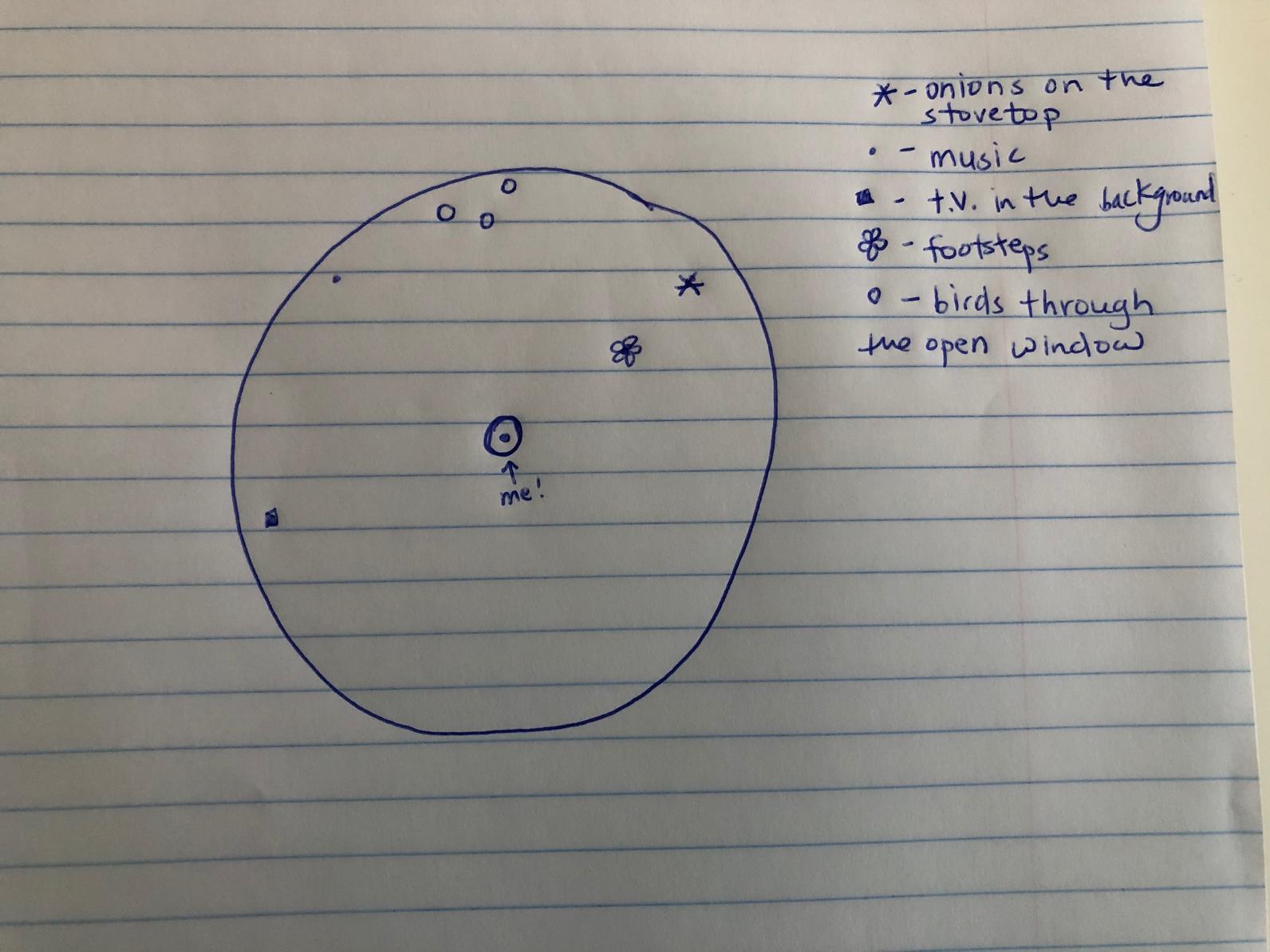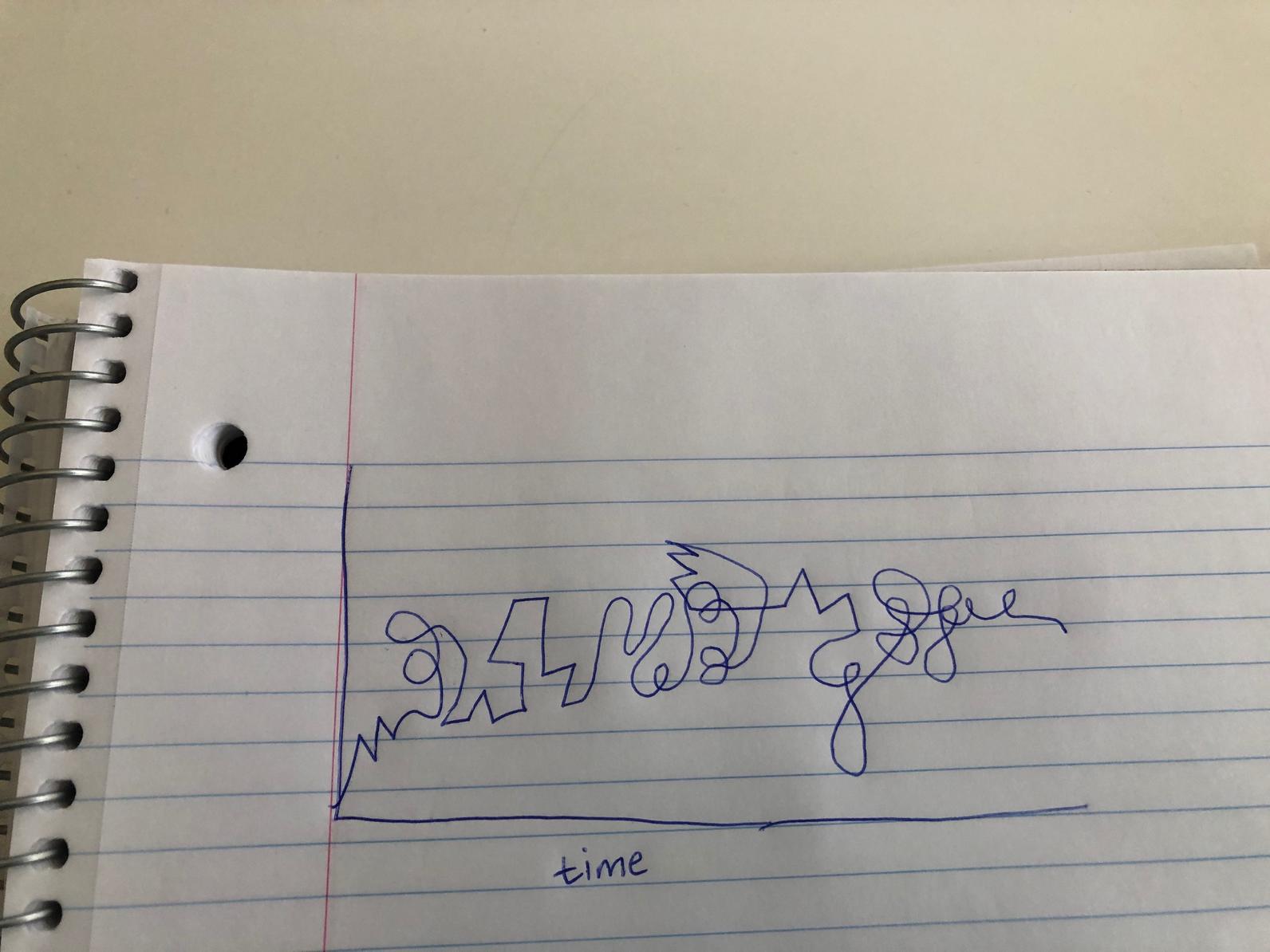What is a soundscape?
A soundscape is a complete understanding of the acoustic world around you. It includes both artificial (human-made) and natural sounds. “Soundscaping” is often used in the study of seasonal progression of the natural world, also known as phenology. Soundscaping is also often used in the practice of mindfulness.
Your Task
Gather a sheet of paper, pen/pencil and find a comfortable spot outside to sit. If you are restricted to staying inside, find an open window or a porch to sit on.
Once in this comfortable space, focus on the sound around you. Many people choose to close their eyes during this exercise as to make it a bit easier to focus on listening. Take as long as you want here - you may find it challenging to focus for longer than 10 minutes, but the longer you listen, the greater your understanding of your surroundings will be.
Another important aspect of Soundscaping is the visualization. Different people prefer different forms of visualizing soundscapes. Included are examples to help you better understand!
Some prefer to draw a circle and place a dot in the middle that represents themselves. While or after you complete the listening phase of Soundscaping, mark in the circle with different colors or symbols where in relation to yourself you heard the sound.

The second visualization approach is creating a graph-like set up. As time goes on while you listen, draw without lifting the pencil from the paper what shape the sound makes you think of. There is no right or wrong way to do this, it is all up to how you visualize sounds in your mind. It can sometimes be challenging to transfer things you visualize in your mind onto paper but try your best! The more you practice this form of Soundscaping the easier it will get.

The key in this exercise is to focus on the sounds around you and how they change over time. Do you find yourself noticing more sound the longer you listen? Why do you think this is?




